

- Home
- Companies
- International Water Management ...
- Articles
- Going with the flow, or fighting for ...
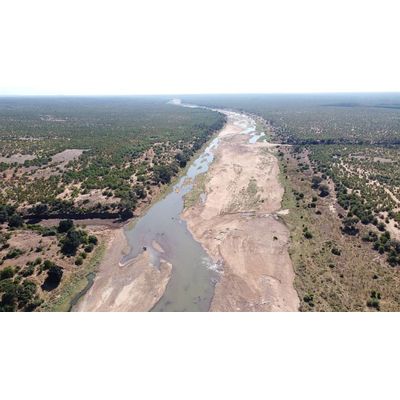
Going with the flow, or fighting for it?
Across Southern Africa, water is a symbol of life; held sacred by a diverse collection of indigenous peoples and communities who believe in the cleansing and life sustaining power of water. It is the spiritual belief of many of these communities that water is a “gift to future generations.” Along the course of South Africa’s Letaba river this life sustaining spiritual connection is just one aspect of what makes the river so important.
Like many river basin ecosystems, the Letaba meets the needs of people who compete for its resources; ranging from water for livelihoods, food, drinking water, irrigation, and stock watering, but at the same time the river also needs to cater for itself, to sustain the ecosystem.
Within ecosystems it is natural for the inhabitants to compete for resources. As the earth’s climate becomes hotter, and pressure on freshwater resources grows, meaning a scenario in which competition is intensified and less water is available for all members of the ecosystem is extremely possible. This competition is further complicated by additional users of the ecosystem, that is the people who make use of and compete for its resources.
But could science offer a way for humans, wildlife, water, and the river ecosystem itself to continue to benefit from the living Letaba River Basin?
In a new IWMI Working Paper, researchers suggest that one solution could begin with calculating environmental flows.
E-flows are the quantity, timing and quality of water flows required to sustain freshwater and estuarine ecosystems and the human livelihoods and well-being that depend on these ecosystems.
The larger Limpopo River Basin within which the Letaba river is found supports an estimated 18 million people in 5200 settlements within Botswana, Mozambique, South Africa, and Zimbabwe. Water resource regulators are responsible for ensuring that Letaba river resource development is sustainable. Regulation should uphold commitments to protect the river’s e-flows so that the daily water needs of the ecosystem and vulnerable people are met. The Letaba river water is used in multiple ways, each of which allows the river ecosystem and people to either co-exist or fail to co-exist.
Spiritual and cultural water use:
Communities advocate for the river’s cultural use due to traditional notions that free-flowing water has spiritual, cleansing, and healing power. The flow of the river is significant because it symbolizes purity and is seen as living—a precursor to its healing abilities. Sustaining the river’s flows in turn sustains community spiritual rituals and cultural practices.
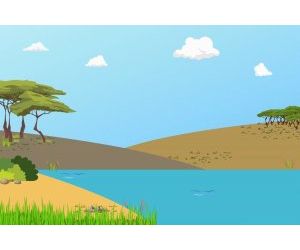
Gathering ethnomedicinal herbs and supporting wildlife:
Communities advocate for the river’s cultural use due to traditional notions that free-flowing water has spiritual, cleansing, and healing power. The flow of the river is significant because it symbolizes purity and is seen as living—a precursor to its healing abilities. Sustaining the river’s flows in turn sustains community spiritual rituals and cultural practices.

Fishing and fisheries:
Fisherfolk travel daily 3-6km up and down the Letaba in search of sharptooth catfish, cyprinids, and tilapia. They fish with the flow of the river according to the seasons: the high summer flow brings large catches, but the winter season sees a dramatic decline in fish availability, prompting many fishers to seek alternative means of making money.
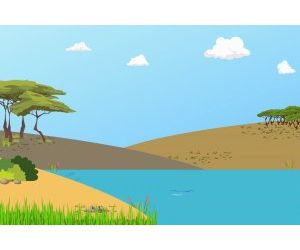
Livestock farming water use:
While planting crops for subsistence farming is the primary form of agriculture serving the Letaba River Basin region, rearing, and tending livestock is not uncommon. Limited grazing area and fodder suitable for cows and goats means allowing the animals to occasionally graze along the riverbank; the more they weigh, the more money their owners can get for them if sold. For livestock farming to be tenable, cows require up to 45 Liters of drinking water per day while goats require 5 Liters per day.
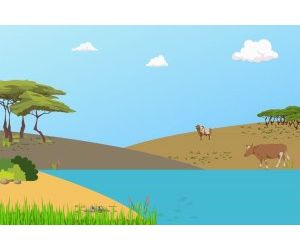
Water use for subsistence agriculture:
The Limpopo River Basin is highly fertile; its banks provide ecosystem services that benefit people across four countries. The Letaba river is a Limpopo tributary along which predominantly female subsistence farmers focus on meeting their family’s food security needs by growing a wide range of plants. These plants include maize, okra, tomatoes, green pepper, watermelon, cabbage, chilies, dry beans, green beans, eggplant, beetroot, onion, and butternut squash. Farmers irrigate these crops with water from the Greater Letaba River or groundwater. This subsistence agriculture enables the communities that are reliant on the river to survive.
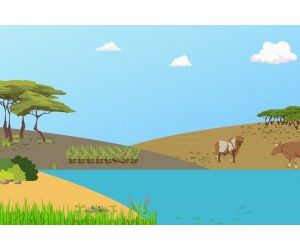
Water stress:
Water Stress in the Letaba river influences all its uses and is a significant contributor to competition for water flow.
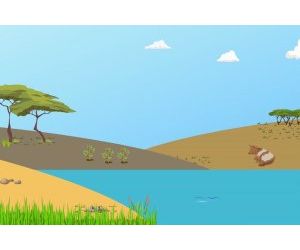
Despite regulators committing to sustainably develop Letaba river resources, the area is instead experiencing water stress caused by competition for the Letaba river water allocation. This conflict has arisen due to commercial enterprises and overextraction of water for irrigation of the lands adjacent to the river. Upstream extraction and large-scale commercial farming have dropped river levels to the point that they can no longer support downstream small-scale subsistence agriculture. As a knock-on effect, small-scale farmers in the Letaba river region have no alternative but to dip into the river’s e-flows for survival. The resultant water stress leaves the communities who rely on the river for subsistence agriculture extremely vulnerable.
The competition between commercial farmers and small-scale agriculture does not have a winner. A possible way forward is to recognize that e-flows can support small-scale agriculture, thus protection of e-flows can alleviate this problem. IWMI’s work found that water regulators have not done enough to communicate the importance of e-flows for sustaining both humans and the ecosystem, and accordingly have not done enough to regulate upstream offtakes of water that disallow e-flows from being provided. This has resulted in inadequate water for subsistence farmers and communities who suffer increased water stress. IWMI’s findings suggest that there is only one solution: managing water usage by upstream commercial farms and other bulk users and releasing water from dams to provide for the e-flows and to close the water gap. IWMI’s research along the river highlights the importance of eliminating the competition between environmental flows and small-scale agriculture. Rivers play a critical role in supporting the social, economic, and health and wellbeing status within their locale. In the Letaba River Basin, the adverse effects of allowing competition to continue will be felt in each of the 5200 settlements that rely on its flows.
On World Rivers Day, the global community seeks to raise awareness of the importance of rivers for healthy ecosystem function and amplify humanity’s obligation to steward rivers. A myriad of people across the globe rely on rivers for their wellbeing, spirituality, and livelihoods. The socio-economic impacts of failing to prioritize and properly safeguard our rivers will be felt locally, nationally, and eventually, globally. IWMI is undertaking research that analyses and explores ways in which we can properly protect river resources as we move towards SDG6: water and sanitation for all.
Find out more about the Letaba river and the communities it supports by reading the full “E-flows in support of the sustainable intensification of agriculture in the Letaba river basin” by Chris Dickens and colleagues.
